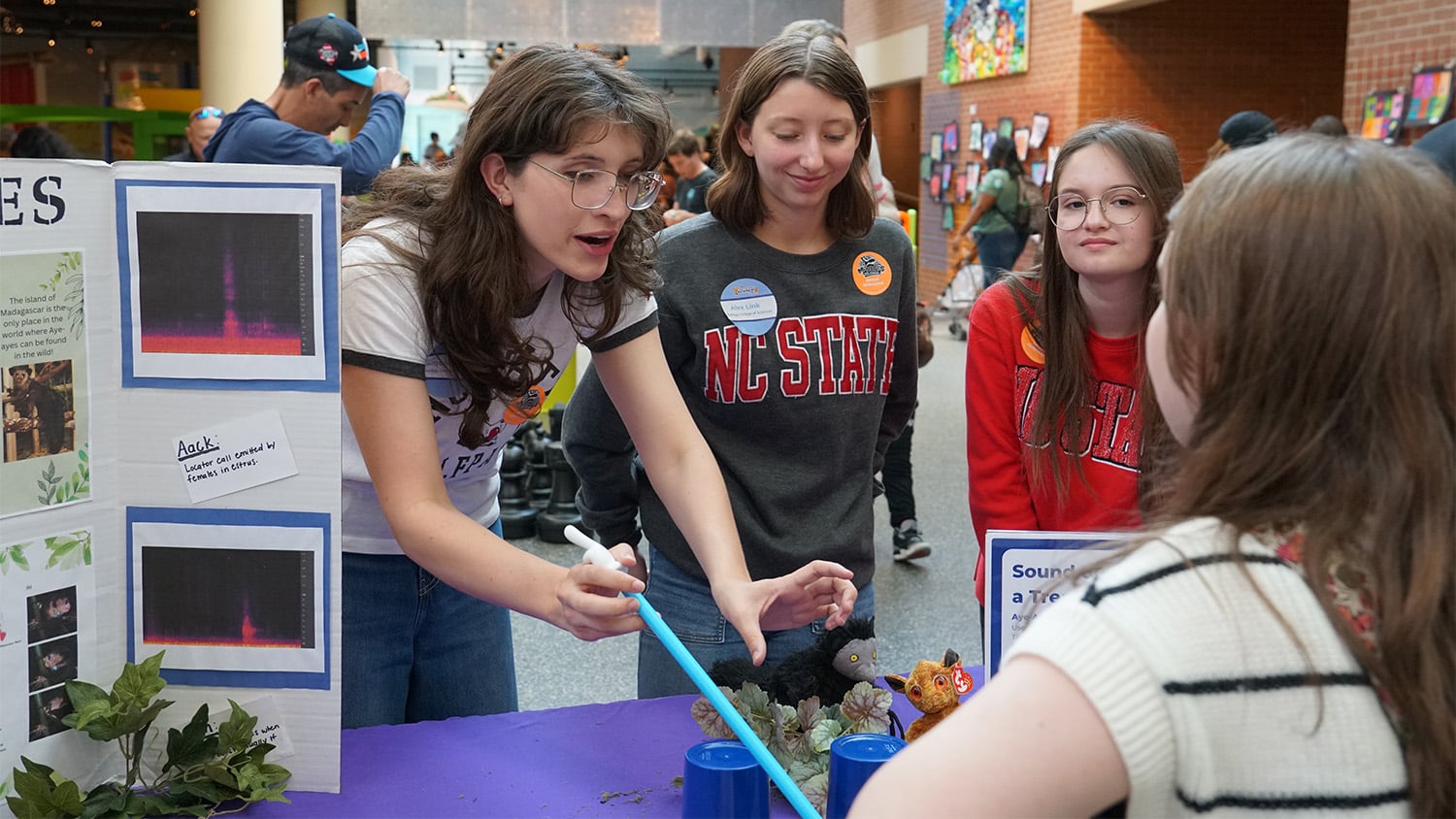Plants 4 Kids Instills a Love of Plants in Children
It’s Saturday morning at the North Carolina Museum of Natural Sciences and fellows from the College of Agriculture and Life Sciences staff a booth, earnestly filling pots with dirt and fielding questions from children. Javier Brumos, a post-doctoral researcher, is part of Plants 4 Kids, an NC State outreach program through the Department of Genetics. The goal is to help children fall in love with science and plants, and the effort is attracting lots of attention.
It’s my sons’ turn now and Brumos carefully helps them plant pea seeds while explaining how best to ensure their growth. At home we follow his instructions carefully, watering and resting the pots on a sunny windowsill. Four days later, the boys are ecstatic to see little leaves poking up.
“We want kids excited about planting things,” Brumos says. “It’s important to get children interested in genetics while they’re young and this program fosters that.”

Kid-Friendly Experiments
Plants 4 Kids, now on its second year, tours Raleigh museums, science fairs and elementary schools and participates in Darwin Day and Biotechnology Day museum exhibits. The monthly demonstrations effectively market Plants 4 Kids and its concepts. But the real promotion is the program’s website which suggests a series of plant-it-yourself experiments such as growing seeds in clay or sand versus soil. Another suggests placing a seedling somewhere sunny and another under a bed to see which grows best. Children are also urged to grow leftover seeds from melons, pumpkins and tomatoes in recycled cups and containers.
Childhood Lessons
Plants 4 Kids was the inspiration of Anna Stepanova and her colleague and husband, Jose Alonso. Both are genetics professors and grew up around people who valued growing fresh food.
Stepanova grew up in Central Russia where most families spent weekends at their government-funded country plot, or “dacha.” There her father built a modest getaway home and garden where her family grew enough herbs, fruits and vegetables to be completely self-sufficient.
Alonso was raised in Spain where four generations of his family farmed olives, oranges and artichokes.

“Children could identify an apple seed and knew where apples came from,” he says nostalgically. “Today, children think food comes from a supermarket.”
The geneticists were equally inspired by the eagerness of their own children and their children’s friends to help plant vegetables at their Cary home.
“We realized children are fascinated with growing things and decided to make something more formal that others could use,” Stepanova says.
“Our goal is developing scientific thinking. If one plant grows taller than the other, children ask why. It could be different soil, conditions or a damaged seed. Kids are observant. They notice differences.”
Rewarding Work
Fitting Plants 4 Kids around their teaching work challenges the professors, and the program requires regular updates and management. Recently Alonso and Brumos translated the website into Spanish to better reach Latino children.
Linda Robles, a post-doctoral researcher and Plants 4 Kids manager, also works hard establishing new demonstrations and seeking the best seeds and soil for the experiments. The Plants 4 Kids seeds my children grew came from a Latin food market, Robles tells me. Some grew two inches within one week.
But the work feels noble and rewarding, especially when children share updates and questions about their experiments.
“Seeing the children’s excitement makes this program worthwhile for all of us,” Stepanova says.
- Categories:


